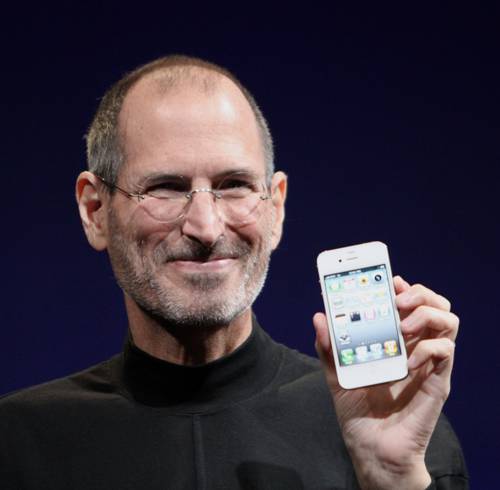
FAQ About Steve Jobs

Who was Steve Jobs?
Steve Jobs was an American entrepreneur, inventor, and the co-founder of Apple Inc. He played a key role in the design, development, and marketing of pioneering technologies and consumer electronics such as the Mac computer, iPod, iPhone, and iPad. Known for his visionary foresight and dedication to users' experience, Jobs is considered a central figure in the personal computer revolution.

What were some of Steve Jobs' major accomplishments?
Steve Jobs' major accomplishments include the founding of Apple Inc. in 1976 along with Steve Wozniak and Ronald Wayne. Under his leadership, Apple introduced groundbreaking products such as the Macintosh, iMac, iPod, iPhone, and iPad. Jobs also played a significant role in popularizing the computer mouse and graphical user interface. Moreover, he purchased and transformed Pixar Animation Studios into a leading animation company.

How did Steve Jobs influence the technology industry?
Steve Jobs influenced the technology industry by introducing innovative products that changed how people interact with technology. He emphasized the importance of design and user experience, setting new standards in product aesthetics and functionality. His vision led to the creation of devices like the iPhone, which defined the smartphone category and influenced technology companies worldwide to prioritize sleek, user-friendly designs.

What was Steve Jobs' role in the founding of Apple?
Steve Jobs co-founded Apple Inc. in 1976 with his friend Steve Wozniak and a less-known third partner, Ronald Wayne. Jobs played a critical role in marketing and delivering the vision for the company’s innovative products. He was instrumental in turning the Apple I and Apple II into successful personal computing products and guided the company's product development strategies for many years.

Where was Steve Jobs born and raised?
Steve Jobs was born on February 24, 1955, in San Francisco, California. He was raised in the nearby city of Los Altos, located in the heart of Silicon Valley. His upbringing in this area positioned him at the frontier of technological innovation, giving him access to early computer pioneers and a creative environment for nurturing his skills in electronics and commercial business.

What is Steve Jobs' legacy at Apple?
Steve Jobs' legacy at Apple is profound; he transformed the company into one of the most valuable and influential technology firms in the world. Jobs' obsessive focus on design, quality, and user experience led to the development of iconic products and the overall Apple ecosystem that continues to dominate the electronic and digital environment today. His vision for integrating hardware and software has continued to influence Apple's strategy long after his passing.

What other companies did Steve Jobs work with besides Apple?
Apart from his pioneering work at Apple, Steve Jobs was also involved with the animation studio Pixar, which he bought in 1986. Under his leadership, Pixar became a leading animation film company, producing blockbuster films such as Toy Story. Additionally, after leaving Apple in 1985, Jobs founded NeXT, a company focusing on high-end computer workstations for the higher education and business markets.

How did Steve Jobs' early life contribute to his success?
Steve Jobs' early exposure to Silicon Valley's technology hub allowed him to develop his interest in electronics and design. His biological father was a professor, and his adoptive parents encouraged his curiosity from a young age. Jobs' experience with technology companies in his teens, such as his summer job at Hewlett-Packard, equipped him with insights into the computing industry that were crucial to his future success at Apple.

What educational background did Steve Jobs have?
Steve Jobs graduated from Homestead High School in Cupertino, California. He briefly attended Reed College in Portland, Oregon, but dropped out after one semester. Nonetheless, he continued attending classes that interested him, such as calligraphy, which he later credited with influencing the typography on the first Macintosh computers.

Did Steve Jobs invent the iPhone by himself?
No, Steve Jobs did not invent the iPhone entirely by himself. While Jobs was the driving force and visionary leader behind its development, the iPhone was the result of collaborative work by a large team of Apple engineers and designers. Jobs' significant contribution was setting the direction and ensuring the iPhone was a revolutionary product in terms of design and functionality.

When did Steve Jobs pass away, and what was the cause?
Steve Jobs passed away on October 5, 2011, at the age of 56. The cause of death was complications arising from a rare form of pancreatic cancer, which he had been battling for several years. Despite his illness, Jobs continued to be involved with Apple’s strategic decisions until his resignation as CEO in August 2011.

What was Steve Jobs' reputation like as a leader?
Steve Jobs had a reputation for being a demanding and sometimes intense leader. His leadership style was characterized by a relentless focus on perfection and a profound passion for innovation. He was known for his ability to inspire his employees with his vision and for pushing his teams to achieve what seemed impossible, though this driven nature could also be challenging for some team members.

How did Steve Jobs contribute to Pixar's success?
Steve Jobs acquired Pixar from George Lucas in 1986 and transformed it into a highly successful animation studio by investing in its technology and staff. Under his leadership, Pixar produced notable films such as Toy Story, which became a huge success and opened the door for future collaborations with Disney. His business acumen helped Pixar grow into a leader in the animation industry, eventually leading Disney to acquire Pixar in 2006.

What was Steve Jobs’ vision for Apple products?
Steve Jobs envisioned Apple products as tools that were not only functional and advanced but also beautifully designed and easy for users to operate. He believed in creating an integrated ecosystem of hardware and software that would provide a seamless user experience, a vision that shaped every product Apple introduced under his leadership.

What impact did Steve Jobs have on the design industry?
Steve Jobs had a significant impact on the design industry by elevating the importance of sophisticated, intuitive product design. His approach to aesthetics and functionality pushed many companies to reconsider their design philosophies, leading to a more widespread emphasis on the look and feel of consumer technology products as key factors in their market success.

Was Steve Jobs involved with NeXT and how did it influence Apple?
After being ousted from Apple in 1985, Steve Jobs founded NeXT Inc., which developed high-end computers for business and higher-education markets. NeXT was instrumental in developing key technologies that would later become fundamental to Apple's resurgence. When Apple acquired NeXT in 1997, Jobs returned to Apple, and NeXT's software became the foundation for macOS, influencing the modern operating systems of Apple products.

How did Steve Jobs approach innovation?
Steve Jobs approached innovation with a focus on simplicity, design excellence, and an unwavering commitment to creating products that consumers didn't know they needed until they used them. This led to several 'firsts' in the tech industry, such as the graphical user interface of the Macintosh, the launch of the iPod, and the iPhone’s touch interface. Jobs believed in making technology accessible and personal.

What personal philosophy did Steve Jobs follow in his business practices?
Steve Jobs followed a personal philosophy of maintaining high standards and focusing on making a big impact with simple but powerful products. He was deeply inspired by Buddhist simplicity and Zen principles, which informed his minimalist design approach. Jobs also adhered to a belief in candor and challenging the status quo, urging his teams to constantly innovate and anticipate consumer desires.

What challenges did Steve Jobs face during his career?
Throughout his career, Steve Jobs faced numerous challenges, including his ousting from Apple in 1985 due to power struggles within the company. Additionally, he had to overcome skepticism in the tech community multiple times, especially during the launch of groundbreaking products. His confrontation with pancreatic cancer was one of his biggest personal battles towards the latter part of his life.

What are some common misconceptions about Steve Jobs?
Common misconceptions about Steve Jobs include the idea that he was the sole inventor behind Apple's products. In reality, Jobs was a visionary leader but worked with extensive teams to bring ideas to fruition. Additionally, while he was known for his intense demeanor, he was also a charismatic motivator, renowned for his public speaking and unveiling of new products that captured the audience’s imagination.
